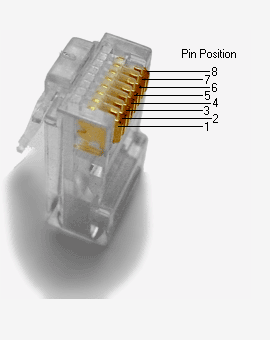RUT230 Powering Options: Difference between revisions
No edit summary |
No edit summary |
||
| (8 intermediate revisions by one other user not shown) | |||
| Line 1: | Line 1: | ||
{ | RUT230 routers can be powered from a '''power socket''' or over an '''Ethernet port'''. | ||
| | __TOC__ | ||
| | |||
| | ==Power socket== | ||
| | |||
} | The router has a 4 pin power socket and can be powered by a 9-30 VDC power supply unit (PSU). Refer to the figure below for the power socket's pinout information: | ||
[[File:Rut230 pinout.png]] | |||
==Passive PoE== | |||
Depending on your network architecture you can use the LAN port to power the device. This feature is available from hardware revision '''0007''' and batch number '''0010''' (you can check this information in the router's WebUI, '''[[Device|Status → Device]]''' section). | |||
Though the device can be powered over an Ethernet port it is '''not compliant''' with the IEEE 802.3af-2003 standard. Therefore, powering the device from an IEEE 802.3af-2003 power supply '''will damage the device''' as it is not rated for input voltages of the PoE standard. | |||
The device is also '''not compliant''' with the IEEE 802.3at standard, meaning it can't power other devices over Ethernet. | |||
{| class="wikitable" | |||
|+ | |||
| style="width: 20px;" | <b>Pin</b> | |||
| style="width: 75px;" | <b>Signal ID</b> | |||
| style="width: 150px;" | <b>T568A Color</b> | |||
| style="width: 150px;" | <b>T568B Color</b> | |||
| style="width: 200px;" | <b>Pins on plug face (socket is reversed)</b> | |||
|- | |||
| 1 | |||
| TX+ | |||
| [[File:Poe white green stripe.png|75px]]<br />white/green stripe | |||
| [[File:Poe white green stripe.png|75px]]<br />white/orange stripe | |||
| rowspan="8" style="background: #F5F4F5;" | [[Image:Poe rj45 connector.png|350px]] | |||
|- | |||
| 2 | |||
| TX- | |||
| [[File:Poe solid green.png|75px]]<br />green solid | |||
| [[File:Poe solid orange.png|75px]]<br />orange solid | |||
|- | |||
| 3 | |||
| RX+ | |||
| [[File:Poe white orange stripe.png|75px]]<br />white/orange stripe | |||
| [[File:Poe white green stripe.png|75px]]<br />white/green stripe | |||
|- | |||
| 4 | |||
| | |||
| [[File:Poe solid blue.png|75px]]<br />blue solid | |||
| [[File:Poe solid blue.png|75px]]<br />blue solid | |||
|- | |||
| 5 | |||
| 7 - 30 VDC | |||
| [[File:Poe white blue stripe.png|75px]]<br />white/blue stripe | |||
| [[File:Poe white blue stripe.png|75px]]<br />white/blue stripe | |||
|- | |||
| 6 | |||
| RX- | |||
| [[File:Poe solid orange.png|75px]]<br />orange solid | |||
| [[File:Poe solid green.png|75px]]<br />green solid | |||
|- | |||
| 7 | |||
| GROUND | |||
| [[File:Poe white brown stripe.png|75px]]<br />white/brown stripe | |||
| [[File:Poe white brown stripe.png|75px]]<br />white/brown stripe | |||
|- | |||
| 8 | |||
| GROUND | |||
| [[File:Poe solid brown.png|75px]]<br />brown solid | |||
| [[File:Poe solid brown.png|75px]]<br />brown solid | |||
|- | |||
|} | |||
==Simultaneous powering== | |||
The device can also be powered from a power socket and over Ethernet simultaneously. The power socket has higher priority meaning that the device will draw power from the power socket as long as it is available. | |||
When the device is switching from one power source to another it loses power for a fraction of a second and may reboot. The device will function correctly after the reboot. | |||
Revision as of 13:15, 17 September 2018
Main Page > EOL Products > RUT230 > RUT230 Manual > RUT230 Powering OptionsRUT230 routers can be powered from a power socket or over an Ethernet port.
Power socket
The router has a 4 pin power socket and can be powered by a 9-30 VDC power supply unit (PSU). Refer to the figure below for the power socket's pinout information:
Passive PoE
Depending on your network architecture you can use the LAN port to power the device. This feature is available from hardware revision 0007 and batch number 0010 (you can check this information in the router's WebUI, Status → Device section).
Though the device can be powered over an Ethernet port it is not compliant with the IEEE 802.3af-2003 standard. Therefore, powering the device from an IEEE 802.3af-2003 power supply will damage the device as it is not rated for input voltages of the PoE standard.
The device is also not compliant with the IEEE 802.3at standard, meaning it can't power other devices over Ethernet.
Simultaneous powering
The device can also be powered from a power socket and over Ethernet simultaneously. The power socket has higher priority meaning that the device will draw power from the power socket as long as it is available.
When the device is switching from one power source to another it loses power for a fraction of a second and may reboot. The device will function correctly after the reboot.


